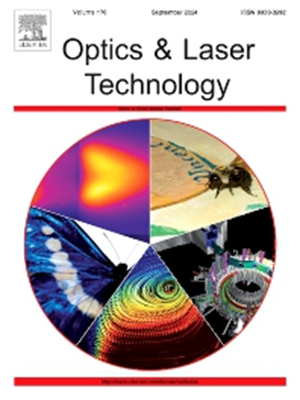Experimental study on post-impact loading of composite sandwich-structured batteries
IF 4.6
2区 物理与天体物理
Q1 OPTICS
引用次数: 0
Abstract
With the growing trends of electrification in the aerospace and automotive industries, the integration of lithium-ion batteries into composite materials offers a promising solution for extending range and reducing dependence on petroleum-based energy sources. This study investigates the mechanical behavior and electrochemical performance of composite sandwich-structured batteries, where batteries are embedded within foam sandwich panels, under varying levels of impact energy. Two sizes of foam sandwich-structured batteries were fabricated using Vacuum Assisted Resin Transfer Molding (VARTM) and subjected to impact tests. Digital Image Correlation (DIC) was employed to observe the strain fields during Compression After Impact (CAI) and Bending After Impact (BAI) loading, while X-ray Computed Tomography (CT) was used to examine delamination at the battery-core interface and internal damage within the composite. The results show that foam sandwich-structured batteries exhibit excellent impact resistance and maintain electrochemical performance post-impact. Innovatively, this study combines the assessment of both mechanical and electrochemical performance to reveal the post-impact residual performance of composite sandwich-structured batteries, with a particular focus on the interactions between the foam core, carbon fiber faces, and embedded battery. This research provides valuable theoretical and experimental insights for the design of integrated electrochemical energy storage systems for future applications.
求助全文
约1分钟内获得全文
求助全文
来源期刊
CiteScore
8.50
自引率
10.00%
发文量
1060
审稿时长
3.4 months
期刊介绍:
Optics & Laser Technology aims to provide a vehicle for the publication of a broad range of high quality research and review papers in those fields of scientific and engineering research appertaining to the development and application of the technology of optics and lasers. Papers describing original work in these areas are submitted to rigorous refereeing prior to acceptance for publication.
The scope of Optics & Laser Technology encompasses, but is not restricted to, the following areas:
•development in all types of lasers
•developments in optoelectronic devices and photonics
•developments in new photonics and optical concepts
•developments in conventional optics, optical instruments and components
•techniques of optical metrology, including interferometry and optical fibre sensors
•LIDAR and other non-contact optical measurement techniques, including optical methods in heat and fluid flow
•applications of lasers to materials processing, optical NDT display (including holography) and optical communication
•research and development in the field of laser safety including studies of hazards resulting from the applications of lasers (laser safety, hazards of laser fume)
•developments in optical computing and optical information processing
•developments in new optical materials
•developments in new optical characterization methods and techniques
•developments in quantum optics
•developments in light assisted micro and nanofabrication methods and techniques
•developments in nanophotonics and biophotonics
•developments in imaging processing and systems

 求助内容:
求助内容: 应助结果提醒方式:
应助结果提醒方式:


